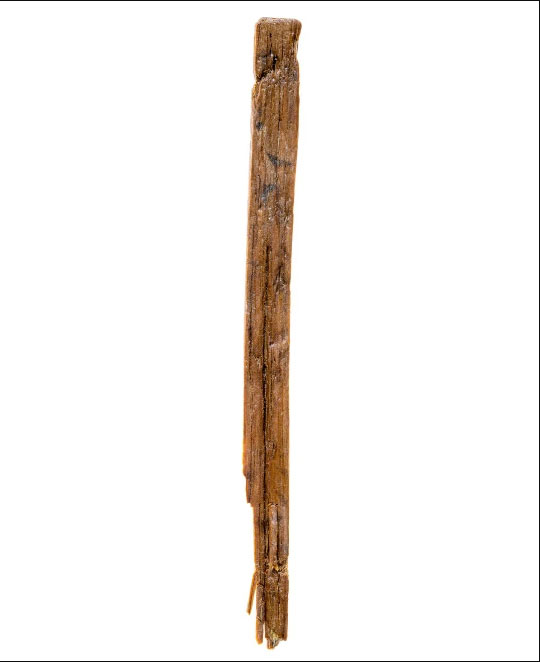
NARA PREFECTURE, JAPAN—The Asahi Shimbun reports that scientists from Japan’s Nara National Research Institute for Cultural Properties have identified the function of a six-inch strip of wood unearthed in 2001 at a government workers’ office in the ancient capital of Fujiwara-kyo. Infrared imaging of the object revealed that the fragment is part of a 1,300-year-old multiplication table written in kanji. The entire multiplication table with all of the equations written out was likely about 13 inches long, explained team member Kuniya Kuwata. In this section, which was likely from the upper-right corner of the document, the equations were written in five rows from right to left and top to bottom in a style used by China’s Qin and Han dynasties, from about the third century B.C. to the third century A.D. Multiplication tables previously discovered in Japan have only had two to three rows, Kuwata explained. The office workers would have needed to know the multiplication table, in addition to reading and writing, the researchers concluded. To read about a fourth-century b.c. bamboo multiplication table, go to "Around the World: China."